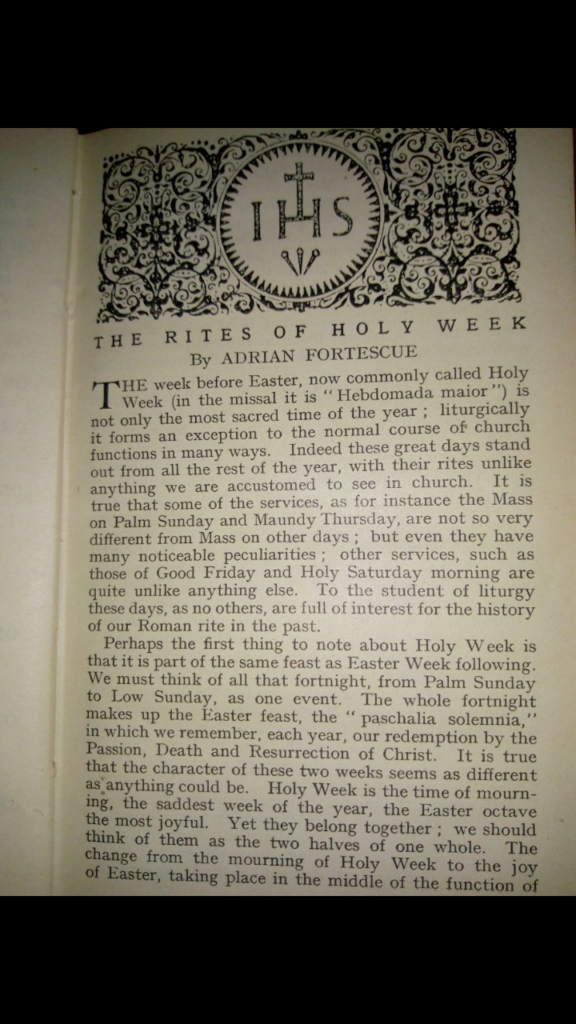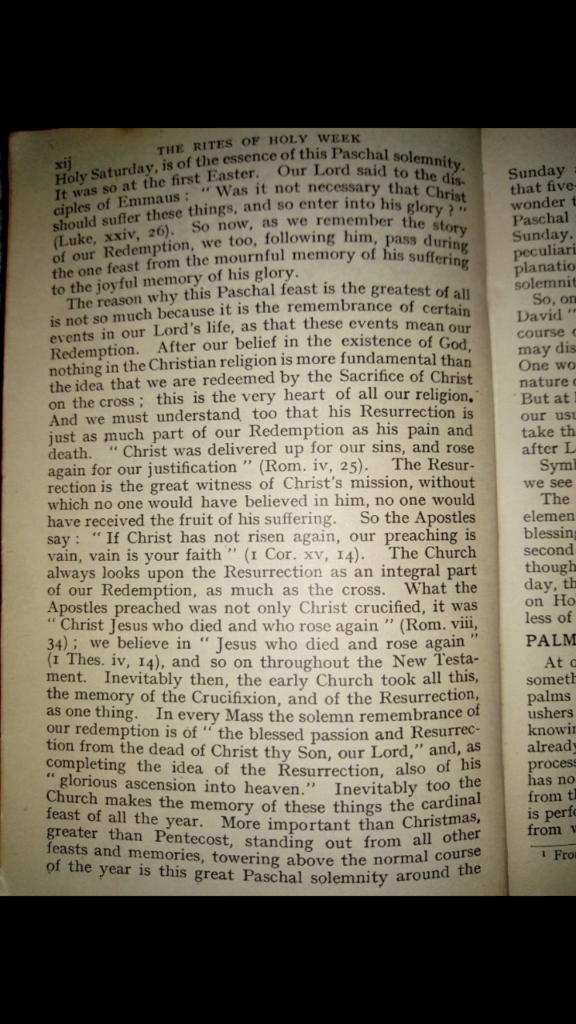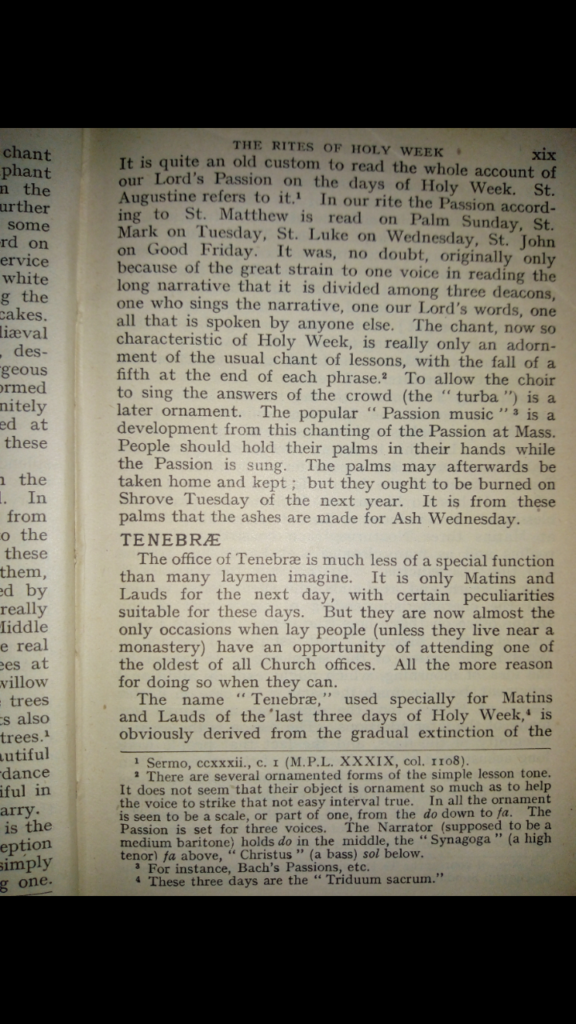A playlist of the music for Mass on Low Sunday/Dominica in Albis/Quasimodo Sunday/Octave of Easter
The chant can be viewed here
Musician, teacher, blogger
A playlist of the music for Mass on Low Sunday/Dominica in Albis/Quasimodo Sunday/Octave of Easter
The chant can be viewed here
For Easter Sunday, follow the ideas for a dry Mass as described in my Palm Sunday Post.
Holy water can be sprinkled during the Vidi Aquam.
Find the text here by selecting the correct date and the rubrics from before 1955.
Here is a playlist of all of the chant I have included organ music for before and after as well as the I filli et filliae as an opening hymn and motets for the Offertory and Communion. For the ordinary- Kyrie etc- I have included both the chant Mass for paschaltide and a more festive choral setting so that you can choose which one to use.
The home altar should be decorated in white and gold, candles lit and incense burned if you have some.
Tenebrae on the evening of Spy Wednesday is the anticipated Matins and Lauds of Holy Thursday. A perfect way to take advantage of a lockdown Holy Week.
Or live-stream at 7.30pm here
Booklet available here
The music may not be the same as the recording but you can follow the text if you wish.
The following notes are those of preeminent liturgist, Fr Adrian Fortescue.
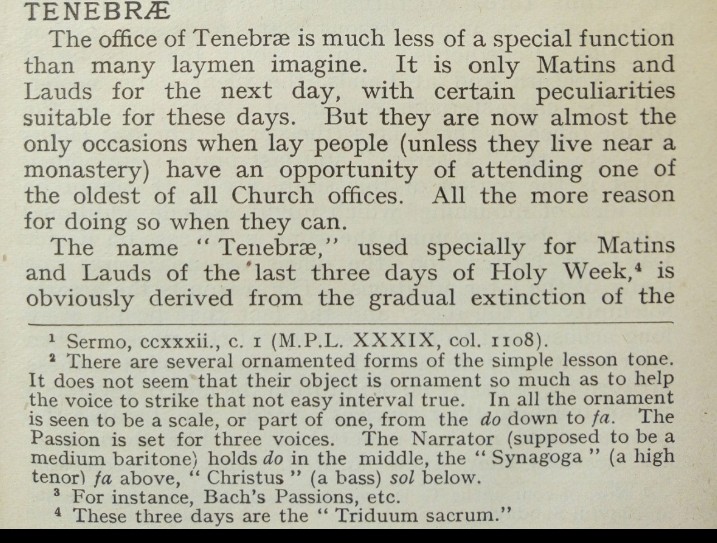
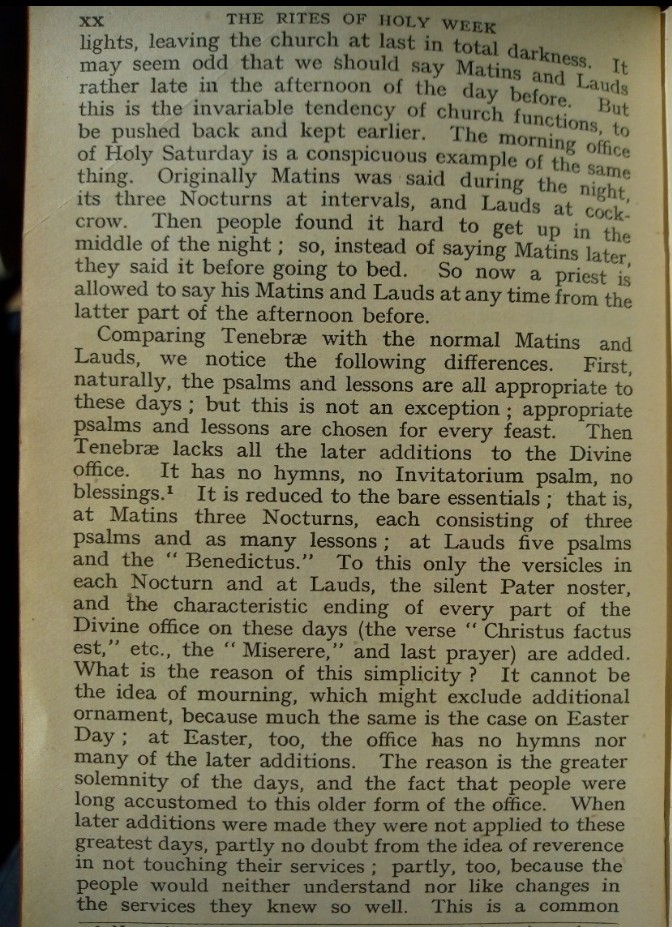
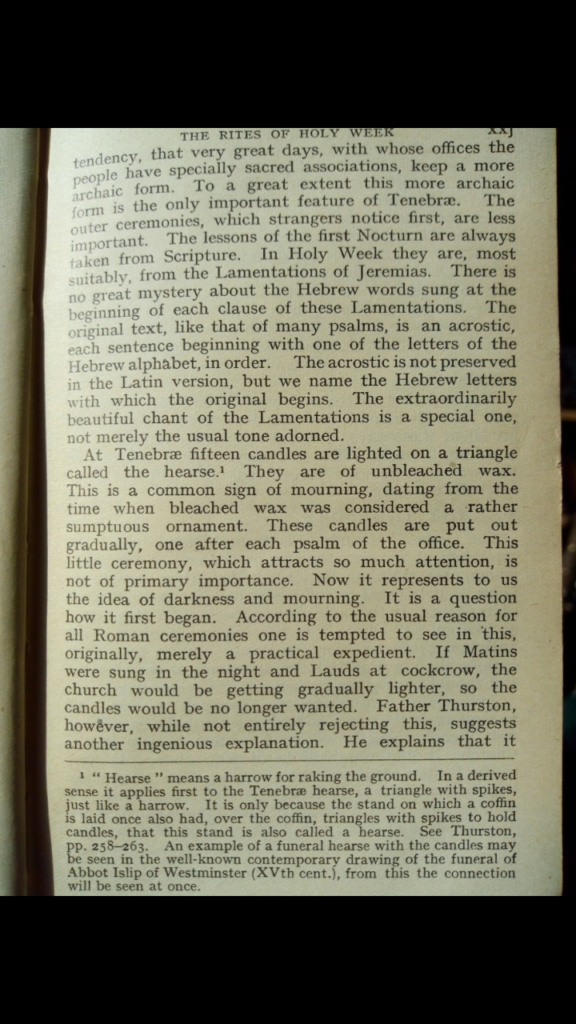
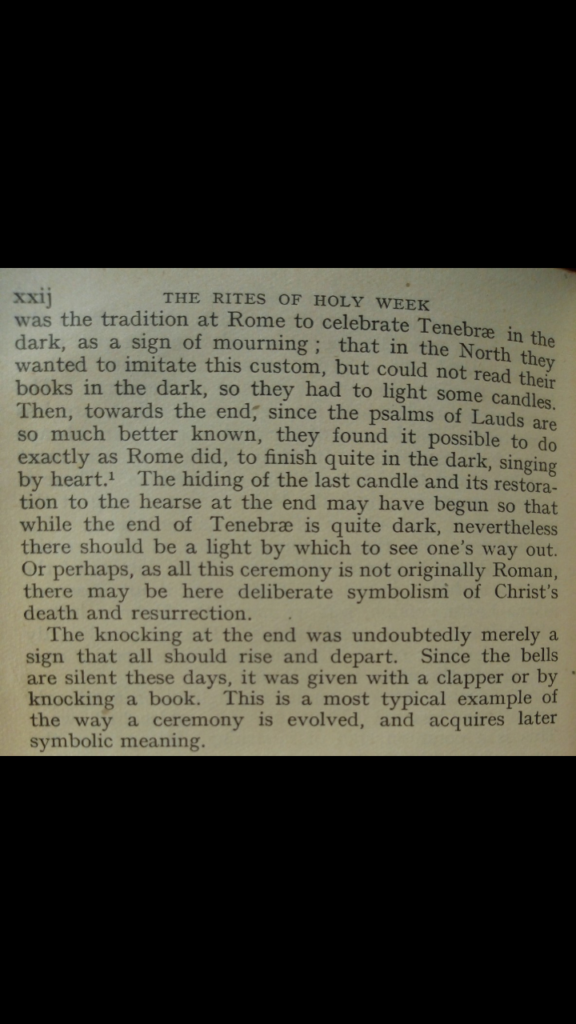
Following my series on how to celebrate the pre-1955 Holy Week liturgy at home, here are some ideas for Holy Thursday.
The ceremonies of Holy Saturday are performed on Holy Saturday Morning. Because these are long and because many baptisms were performed after the blessing of the font, I suggest splitting the liturgy in two
We plan to spend the time in the afternoon making Easter decorations.
Some pointers for adapting the liturgy in the booklet.
Part 1- Morning
Part 2- Evening
Once the children are in bed, it is time to decorate the house, prepare the Easter lunch and hide the eggs for the Easter egg hunt!
The next in my series on how to observe the pre-1955 Holy Week liturgies at home is the Good Friday ceremonies.
The traditional Good Friday Liturgy is celebrated in the morning.
The liturgy ends abruptly after the prayer “Quod ore sumpsimus”
It would be good if the house could remain in silence (or close to it depending on the age of the children) until Stations of the Cross are prayed at 3pm.
Remember my perpetual disclaimer, it is better to do less and do it well than to push small children beyond what they can handle. All or part of this can be used to enable the family to worthily observe the Passion of the Lord while we are not able to attend church.
Once the children are in bed, the adults could pray the office of Tenebrae (Matins and Lauds of Holy Saturday anticipated).
Live-streamed from the Birmingham Oratory at 7.30pm here
One of the most iconic pieces of sacred music, the following short film tell the story of how Allegri’s Miserere went from being a top secret jewel of the Vatican’s celebration of Tenebrae to being one of the most well known liturgical compositions in the world.
And for the musicians among out there…
Following on from my post on how to celebrate the pre-1955 Palm Sunday liturgy during lockdown, see below some ideas on how the Maundy Thursday liturgies might be kept at home – in the form of a Missa Sicca or ‘Dry Mass.’
The Mass of Holy Thursday in the traditional pre-55 form is held in the morning. (How child friendly is that?!)
The Mandatum or foot washing is optional and was performed separately at a different time. I have included the chants on the playlist. Some families may wish to have the father wash the feet of the family to represent the servant leadership of Jesus. Some may feel that this ceremony is too sacerdotal to be recreated in the home.
As I said last time, this is the maximum that can be done to celebrate the liturgy to the best of our ability at home but, we must be prudent and adapt to what we can achieve in our own setting. To do less and do it well with a prayerful atmosphere is better than forcing your kids to sit through too much and end up causing resentment and or tantrums!
In the evening, Tenebrae (Matins and Lauds of Good Friday) can be prayed. I will put up a separate post on this.
We have rule in our home- no entertainment in Holy Week. This follows a custom of a bygone era (for now…) where Holy Week was taken as a retreat with more lay attendance at the divine office, public and private devotions and passion plays.
The Passion of St Matthew was read at Mass today so why not enhance your interior recollection by listening to Bach’s sublime setting of the text.
Text available here

